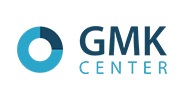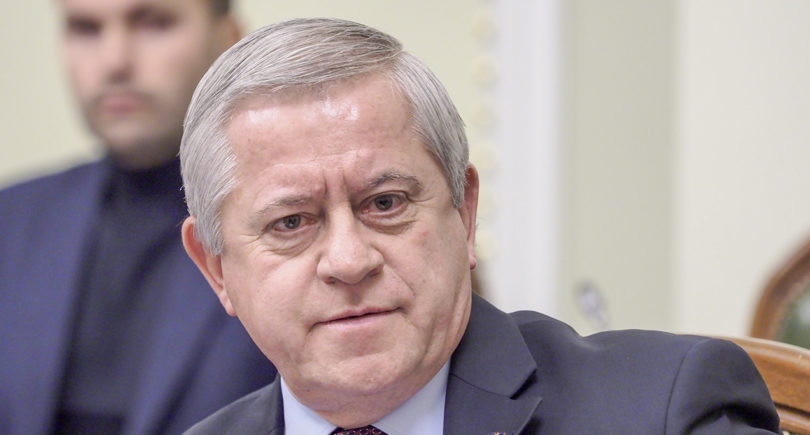
Opinions State Ukraine’s economy 1963 04 December 2024
The key risks in 2025 include an increase in the intensity of warfare and the amount of damage to energy infrastructure
The National Bank of Ukraine predicts that the Ukrainian economy will grow by 4.3% in 2025, compared to 4% this year. Inflation expectations for the next year are at 7% compared to 10%+ in the current year. Moreover, the key task for the NBU is to comply with the planned inflation rate rather than to achieve other macroeconomic indicators. This was stated by Deputy Governor of the NBU Sergiy Nikolaychuk during the discussion “What Awaits the Economy in 2025? Overview of forecasts from economists and authorities”, organized by the Center for Economic Strategy. GMK Center presents the theses of the speech.
What does the National Bank expect in 2025?
About a month ago, the National Bank of Ukraine improved its GDP growth forecast for the next year from 4.1% to 4.3%. This scenario remains relevant despite the results of the US elections and the additional uncertainty associated with them. In 2026, the NBU expects economic growth of 4.6%.
Economic growth will be constrained by labor shortages, security risks, migration processes, and the slow normalization of economic conditions. The three key risks of the NBU’s 2025 forecast (with a strong impact and a probability of 25-50%) are: a longer duration and intensity of the war, higher budgetary needs, and a greater shortage of electricity due to increased damage to the energy infrastructure.
The key forecast indicator for the NBU is the inflation rate. In late October, the NBU downgraded its inflation forecast for 2024 from 8.5% to 9.7%. It is likely that inflation will still exceed 10% at the end of this year (year-on-year inflation has already reached 9.7% in October 2024), but next year we expect it to slow to about 7% and to decline to the 5% target in 2026.
The inflation forecast is a function of several key factors. First, there are exogenous (external) factors. The rise in inflation at the end of this year was unexpected for everyone. Most of the factors that led to the acceleration of inflation are temporary, in particular those related to a smaller harvest and higher food prices. Other reasons for the rise in prices include problems in the energy sector and higher wages. If we talk about the pressure on inflation due to increased budget expenditures, the impact of the Winter E-Pidtrymka program (UAH 1000 for various expenses) on overall aggregate demand is rather insignificant.
At the same time, when it comes to the medium term, the NBU’s focus on creating appropriate monetary conditions to bring inflation to the target level is much more important. When the NBU publishes its forecast, it includes the appropriate monetary conditions, the interest rate, and the exchange rate. We publish the interest rate forecast, but not the exchange rate, but these parameters must be consistent with our inflation forecasts. If the situation differs from the desired development, we will adjust the values of these parameters accordingly.
The NBU’s foreign exchange policy
The NBU constantly assesses the situation in the economy and lifts currency restrictions as soon as the appropriate macroeconomic conditions are met. As for the NBU’s exchange rate policy next year, I can tell you what we will definitely not do. Namely, we will not use the exchange rate set out in the state budget (an increase in the average annual exchange rate from UAH 40.8 to UAH 45) as a benchmark for our policy. We have not done this since at least 2014-2015. The exchange rate in the budget is a technical indicator that is needed to translate various indicators in dollars or other currencies into the hryvnia equivalent.
Our actions in the foreign exchange market are a separate element of our overall toolkit, which we use to achieve our price and financial stability objectives, as well as to ensure that the foreign exchange market is stable, and that exchange rate movements do not undermine the achievement of our monetary objectives in the medium term. The NBU also sees a pressing task in the medium term to strengthen the role of the exchange rate as an “absorber” of shocks to strengthen the economy’s adaptability.
I do not agree with the thesis that we should devalue the hryvnia to minimize the negative impact of huge external imbalances. We have a huge current account deficit, which is determined by the specifics of our economy’s functioning in the war. At the same time, the deficit is gradually being closed by international financial assistance. Therefore, devaluation is a strange and wrong way to go, especially given that we expect reserves of more than $43 billion by the end of this year.
Support from partners
The question of how Ukraine’s economy will develop in the post-war period needs to be considered now. Indeed, if you look at the international experience, very often countries after the war went into a prolonged recession and very often it was due to the fiscal consolidation they had to carry out. These countries had to make great efforts to reduce the level of public debt that they had accumulated before the war. Indeed, there are concerns that Ukraine may also follow this path after the war as a result of a significant reduction in the fiscal impetus that is currently supporting our economy.
At the same time, when we analyzed this long-term scenario of Ukraine’s economic development, we primarily assumed that our country would continue to integrate into the European economy. This is an important factor that will give impetus to economic recovery. The second assumption is that international partners will continue to support Ukraine, largely through frozen Russian assets and other sources. We are more optimistic and believe that Ukraine’s post-war development scenario will differ significantly from the negative examples of other countries.






